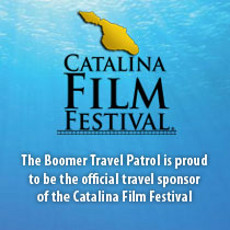Arts & Culture Patrol
-

Arts & Culture Patrol
$0.00Join Marian, a noted travel writer who has visited 54 countries, as she educates us on the history and arts of the many cultures around the world. Learn More -
Beijing by Motorcycle Side-car
$0.00Yves du Parc, Vice President and General Manager of Beijing Sideways, sized my helmet and adjusted my lap belt in the side car of his “Chang Jiang,” literally "The long River" motor bike. He then took my photo, hopped onto his seat, turned the ignition key, and we were off. Although I had traveled through Beijing many times in the back seat of a taxi, this was a new experience, in-fact my first ever motorcycle experience!
Learn More -
Ceramic Arts in Korea
$0.00Since ancient times, Korea has been famous for its ceramics. In fact, while many travelers visit Japan for its pottery, they often overlook the reality that Japanese ceramics, which spread north through Japan via its southern island of Kyushu, was actually “introduced” from Korea. Honestly, “introduced” is too mild a term. When the Japanese invaded Korea during the 16th Century, they abducted the great Korean potters and forced them to work in Japan. One Korean potter taken to Japan at this time was referred as “the god of pottery.” Korea's great Ri Sam-pyeong, known in Japan as Kanegae Sampei, actually established the world famous pottery village in Arita, Japan, near Fukuoka City. Yi was originally from the Geum River Basin in Korea. As recently as 1990, a memorial was set up at the entrance to Donghaksa Buddhist Temple in Gongju, South Korea, with the inscription paid for by the people of Arita, Japan.
Learn More -
Cultural Travels in Macau
$0.00Macau, with its famous “Cotai Strip”, is often considered the Las Vegas of the East. Nevertheless, I went to Macau for five nights; stayed at the Sheraton Macao (3,896 guest rooms) the largest hotel in this entire Special Administrative Region of China, and did not gamble once! Instead, I discovered the destination's cultural side.
Learn More -
Kyoto's Gion Matsuri
$0.00One of the most exciting experiences in Japan is the opportunity to witness or even be a part of a local festival. I did this two summers ago in Kyoto City, Japan. Kyoto was the imperial capital of Japan from 794 to 1868, and it is still known today as the cultural capital. Saved from bombings during World War II, its1600 Buddhist temples, 400 Shinto shrines, 17 UNESCO World Heritage sites, and numerous palaces, gardens, museums, and machiya(traditional merchant houses), are well preserved and continuously being renewed and restored. Kyoto is home to three of the most famous festivals in Japan. These include: the Aoi Matsuri or Hollyhock Festival, held every May 15, the Jidai Matsuri or Festival of Ages, held every October 22, and the grand Gion Matsuri, which takes its name from the city's Gion geisha district, and runs for the entire month of July.
Learn More -
Making an Edo Period Paper Lantern in Tokyo
$0.00It was a rainy autumn day in Tokyo, as my companions and I shuffled out of the Toei Chikatetsu metro line at Asakusa Station. Emerging onto the street level, we quickly opened and raised our large, red, paper umbrellas, on loan from our escorts, and made our way down a few alleys to the Ohshimaya Onda Chochin Lantern Shop. Here, we were greeted with bows by Mr. Shunji Onda himself, a fifth generation master of the Japanese paper lantern. Mr. Onda’s business was founded 160 years ago by his great-great grandfather, when Kyoto was still the official capital of Japan and “Edo” was ruled by the powerful Tokugawa shogunate. He both custom makes and hand paints the lanterns. He uses patterns, designs, letters, characters, and family crests from the Edo period as well as some more modern designs upon request.
Learn More -
Sakura City, Chiba Prefecture: History and Culture in the Suburbs of Tokyo
$0.00Narita International Airport, also known as Tokyo Narita Airport, is the most popular gateway to Japan, but in reality, it is not in Tokyo at all. It is a 60-minute express train ride (80-90 minute bus ride) outside of Tokyo in Chiba Prefecture. If you are stuck by Narita Airport, because of a long flight connection, there is still lots to do. Sakura City is a twenty-minute taxi or train ride (JR or Keisei lines) from Narita Airport. Overflowing in history, it is renowned for its well restored former samurai residences and the National Museum of Japanese History, whose exhibits reveal the story of Japan from archaeological discoveries to modern times. From an artistic perspective, Sakura boasts two distinctive art museums: Sakura City Museum of Art and Kawamura Memorial Museum of Art. The former was previously the Sakura City branch of Kawasaki Bank and its entrance way is a prefectural cultural property. It displays work by local artists from Sakura and Chiba's Boso Peninsula. The latter museum is heralded for its rich collection of European masters, including: Rembrandt, Renoir, Monet, Chagall, Picasso and Braque, as well as 20th Century Japanese sensei, such as Korin Ogata.
Learn More -
Soviet Surprises in Tallin, Estonia
$0.00If you sign up for a tour in Tallin, Estonia, you may encounter a few surprises. After finishing a lovely coffee break at a historic Viennese-style café, our small group strolled out into the cobblestone streets of Old Tallin. While admiring the flowery and flowing medieval architecture, we were suddenly jolted into another era. “Halt!” a man shouted! He was a uniformed police officer, who, with a heavy Russian accent, demanded that we “Stop taking photos!” He pulled us aside and ordered us to present our passports and papers. Our group members looked at each other wondering what could possibly be wrong. “Be quiet! Stand against Wall!” The office demanded. He then pulled out handcuffs and began hand-cuffing my friend. We were all a little bit frightened (or at least uneasy) until we noticed that the hand-cuffs were wrapped in pink velvet!
Learn More -
The Goma Fire Ritual at Shinshoji Narita-san Temple: Chiba
$0.00The taiko drums reverberated with deep, steady tones, as the monks on either side of the altar pounded them with consistent strokes of their long, wooden bachi (taiko drum sticks). We removed our shoes and found spaces to kneel amongst the other parishioners on the crimson carpet. It was morning outside, but the interior altar was dark and candlelit, with an array of large reflective and intricately decorated golden ornaments dangling from the ceiling. The taiko drumming monks continued, while other monks chanted and shook golden bells. The head priest, also chanting, added sticks to a fast growing fire that he had created as a symbol of peace and purification. The flames, that seemed to understand his esoteric commands, were part of a ritual that is intended to deliver the wishes of the people to Buddha. The pilgrims pray for safety, luck, and prosperity in their lives, and in conjunction with this, at the end of the ceremony, everyone brings his or her purse or satchel to the priest to be waved over the smoke. This supposedly enhances the future value of the bags' contents.
Learn More







